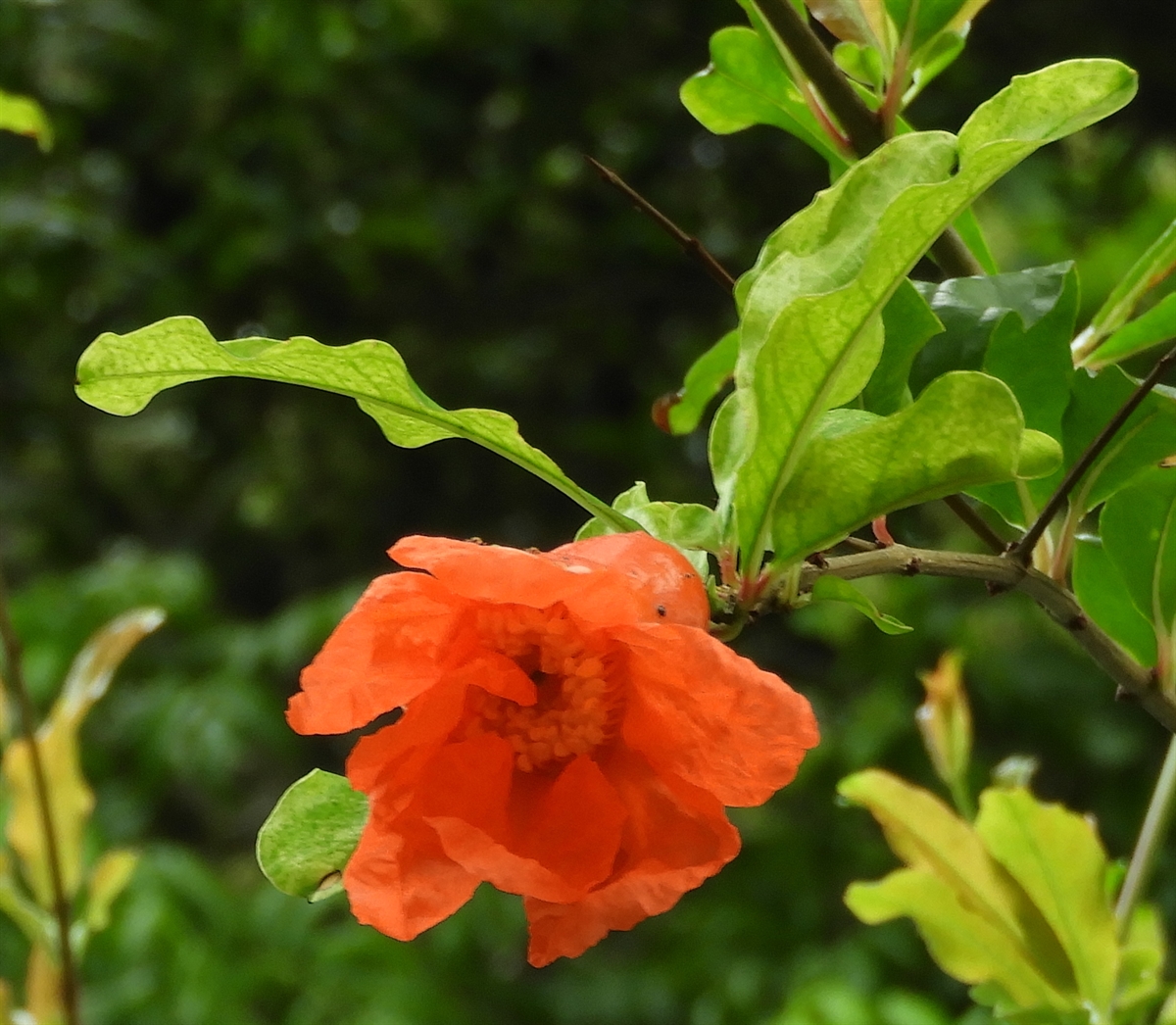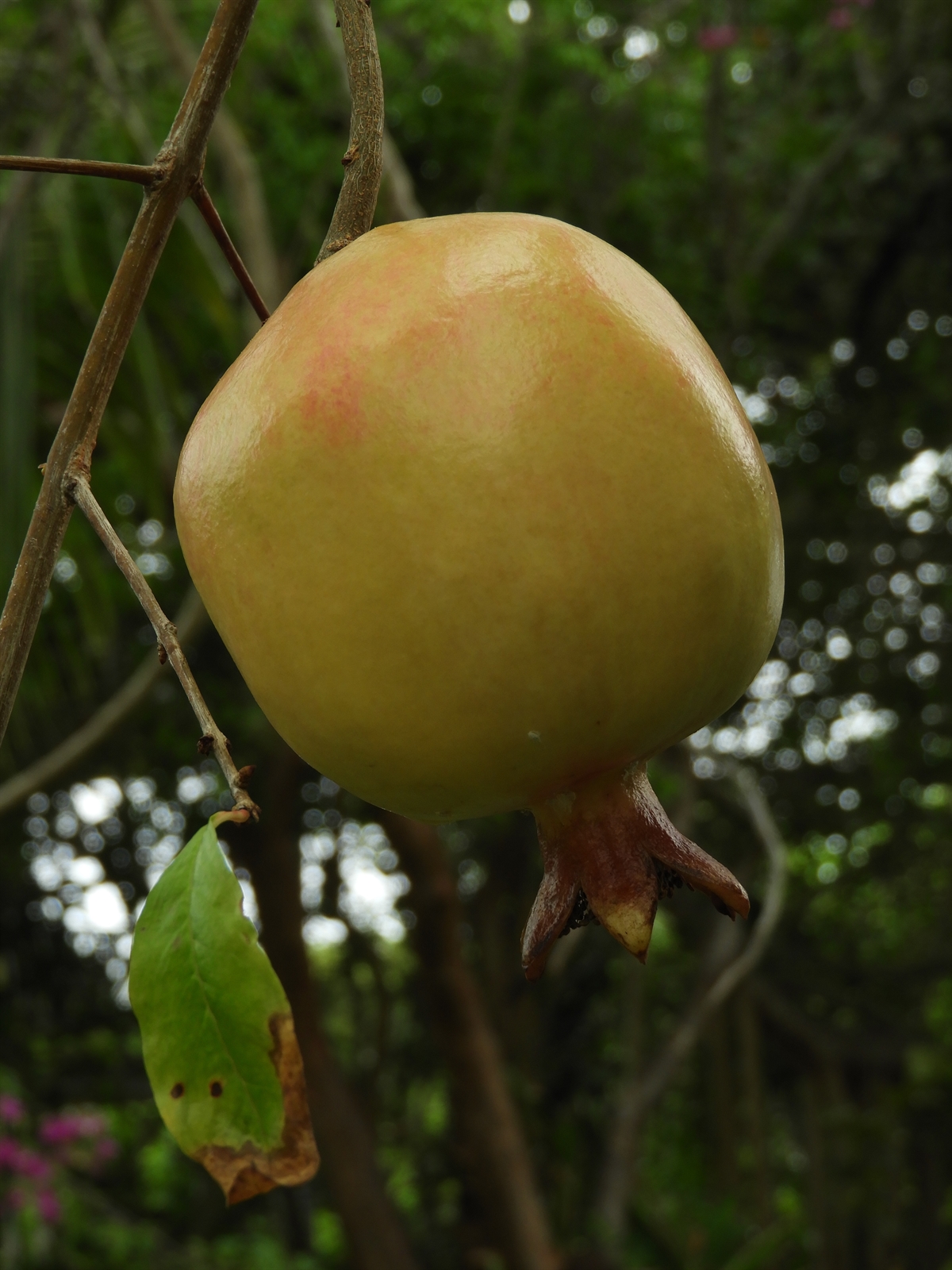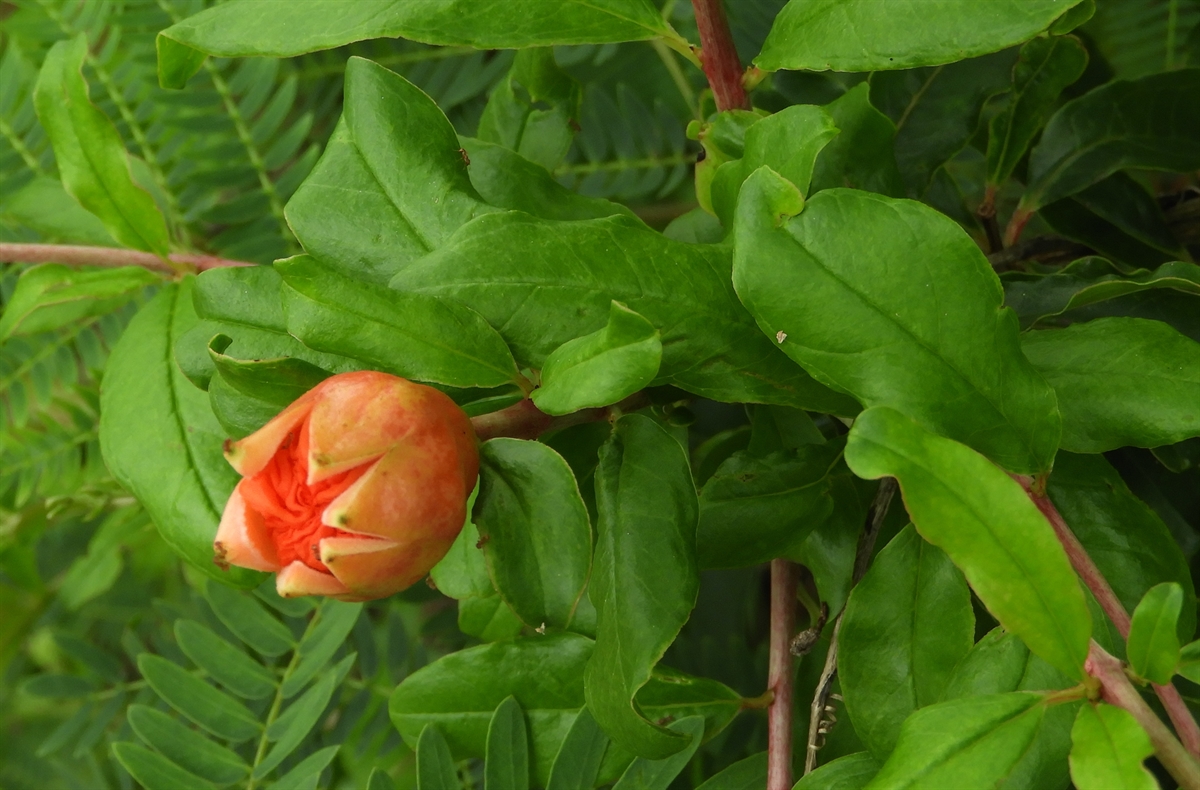Habit: Punica granatum grows as a shrub/tree up to 5 m in height. The leaves are arranged oppositely, clustered at branch tips, oblong to oblanceolate, to 6 cm long, 3 cm wide. The leaves have an obtuse leaf apex and an entire margin.
The complete, perfect, actinomorphic flowers are solitary in leaf axils. The sepals, petals, and stamens are fused together to form a hypanthium. The calyx has 6 orange/green sepals. The corolla has 6 orange petals. There are numerous stamens adnate to the corolla. The ovary is inferior with multiple locules and ovules. The fruit is a berry that retains the sepal lobes at maturity.
Habitat: Punica granatum grows in Human Altered environments (yards, gardens).
Distribution: Punica granatum is NOT native to the Lucayan Archipelago and does not occur in natural areas. It is native to Persia and the Middle East. It is grown throughout tropical and subtropical regions of the world.
Medicinal/Cultural/Economic usage: Punica granatum has been used medicinally in the Lucayan Archipelago to treat gastrointestinal issues and in strengthening teas.
Punica granatum is grown as a fruit tree for the tasty and fleshy seeds eaten raw or made into juice.


